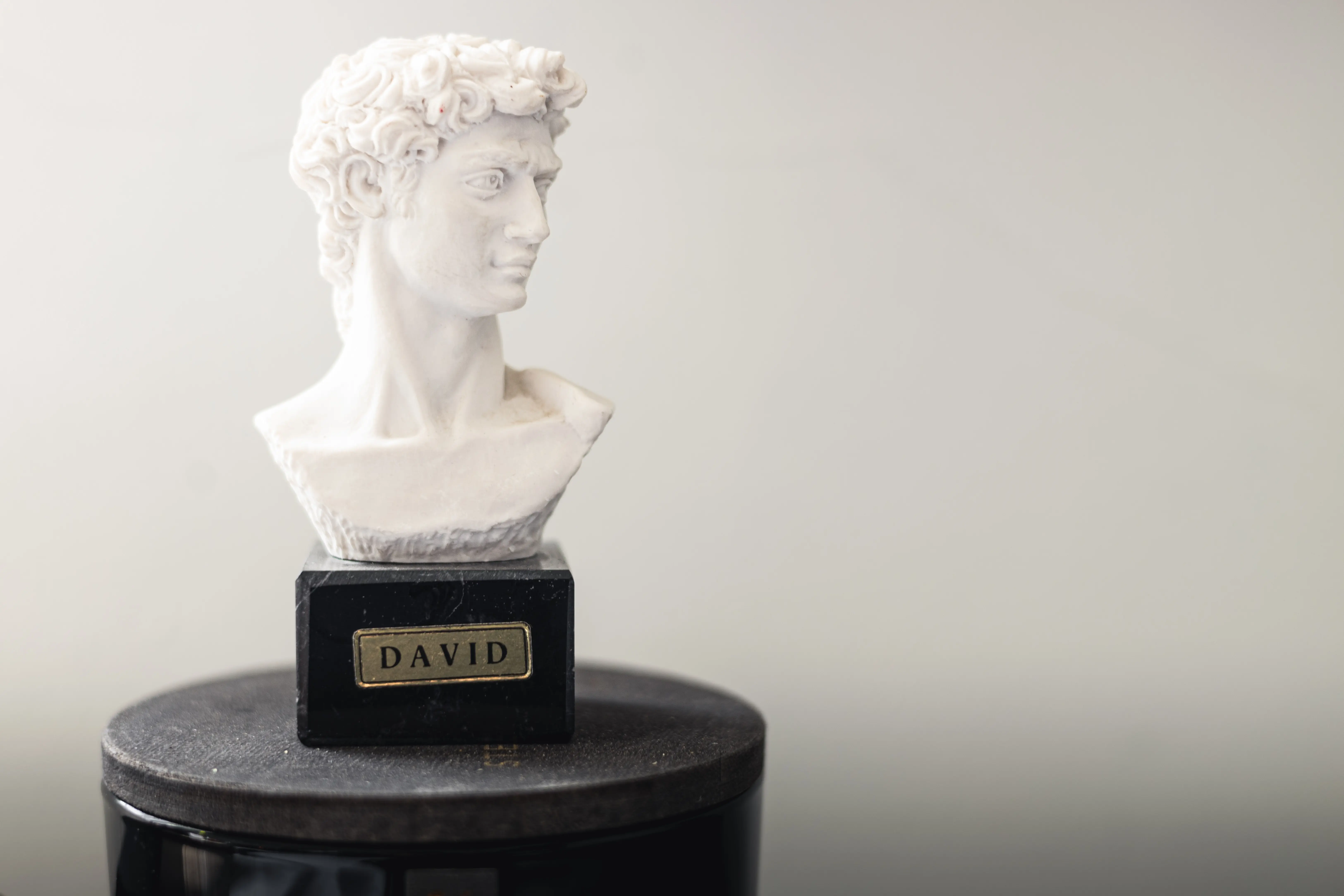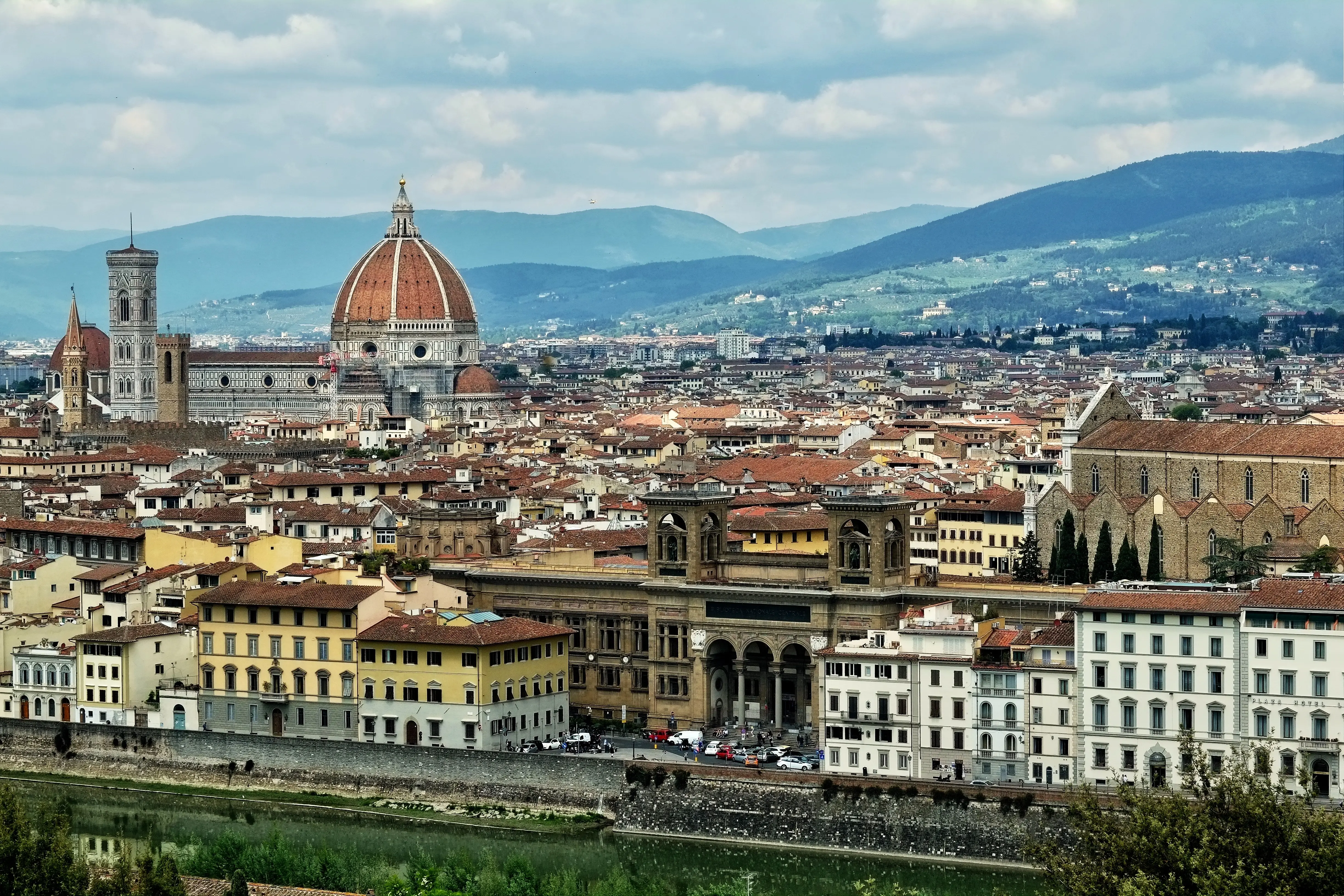Michelangelo is considered one of the greatest painters, sculptors and artists of all time. He is considered one-third of the great triad of Italian High Renaissance, with the other two being only Leonardo da Vinci and Raphael. Some scholars have called him the greatest artist of all time due to his demonstration of sheer dexterity in poetry, sculpting, architecture and painting. His works of art are among some of the most famous in Roman Catholicism and the entire world.
Birth and Early Childhood
Michelangelo Buonarroti was born in Caprese, Arrezo, Italy, on 6th March 1475 (Museum of Fine Arts, 2019). The historian Vasaris states that his birth occurred when “mercury and Venus entered the house of Jupiter”, meaning that his life would be one of great and extraordinary works from both intellectual and manual dimensions (Joost-Gaugier & Symonds, 2003).
His father was a bank owner and later a government official before moving to Florence and setting up a farm. His mother died while he was six years old. His father gave him to be nursed by a man and his wife, who were both descendant and stonecutters, to which Michelangelo credited his art career when he told Vasaris, “If I possess anything of good in my mental constitution, it comes from my having been born in your keen climate of Arezzo; just as I drew the chisel and the mallet with which I carve statues in together with my nurse’s milk,” (Joost-Gaugier & Symonds, 2003).
Michelangelo’s father put him to a school named Francesco da Urbino in Florence, in which the young one was supposed to learn grammar. It appears that he only learnt how to read and write Italian, as he later complained in life that he did not understand Latin. He found himself attracted to young artists apprenticed to established sculptors and painters during his time in school. He developed an intimate relationship with Francesco Granacci, which ultimately led him to quit grammar school. This did not auger well with his father and uncles, who are reported to have beaten him senselessly for his pursuit of art (Joost-Gaugier & Symonds, 2003).
Apprenticeship and Early Work
Noticing that Michelangelo was adamant in his love for art, in 1488, his father allowed him to go into the apprenticeship of Domenico Ghirldanjo’s workshop. It is unclear what impact this apprenticeship had on Michelangelo’s career, with historians claiming that he did not retain any happy memories from the workshop in part due to Domenico’s envy of his work. Michelangelo was highly talented, brash and brutally honest. A master-student dynamic has been drawn comparing the Michelangelo-Domenico dynamic to the Haydn-Beethoven dynamic, where the master has not been trained or unable to handle the enormous once-in-a-generation-type genius displayed by their student. However, it is said that Michelangelo held his master in high regard as an artist and a man. Nevertheless, Michelangelo honed his painting skills while in this workshop (Joost-Gaugier & Symonds, 2003).
Somewhere along with his apprenticeship, Michelangelo and Granacci paid a visit to Leonardo Medici, a member of the wealthy, influential Medici family. On this trip to Lorenzo’s garden, Michelangelo feast his eyes on statues and precious antiques that Leonardo had stocked in his garden. This fascinated young Michelangelo to the point of no longer spending much time at Granacci’s workshop but began spending his days at the garden, marvelling at the pieces. Having observed young Michelangelo chiselling a piece of refuse marble, Lorenzo decided to grant him full sponsorship throughout his life (Joost-Gaugier & Symonds, 2003).
For three years, Michelangelo learnt under Lorenzo. This period is described as his most formative period, as Lorenzo was not merely just a politician. Being immensely rich and a genius himself, Lorenzo attracted tens of the greatest philosophers, artists and painters of his time. Michelangelo met with these great thinkers, men who would forever revolutionize their crafts. Lorenzo’s house was also home to expensive manuscripts, paintings, statues by Donatello – resources from across Europe and the Levant. This proved to be great exposure for Michelangelo, who would later be influenced in his craft to create aesthetically pleasing work and entrench his work in deep philosophical connotations (Joost-Gaugier & Symonds, 2003).
Lorenzo died in 1492, forcing Michelangelo to return to his father’s house. Here, he set to work on a statue of Hercules, which has since been lost. Lorenzo’s son, Piero, asked him to go back to Casa Medici, and during this period, Michelangelo introduced himself to and worked with cadavers. The Prior of S. Spirito gave him a spare room, in which he did all his dissection. Some of his later art would nearly 400 years later raise conspiracy and be compared to human organs, as to have such a circumscription that would, upon close inspection, resemble the outline of organs, such as the kidney (Eknoyan, 2000).
Career in Rome
Michelangelo left Florence and went to Bologna, where he worked for a nobleman named Gianfrancesco Aldovrandi for a year. During this time, he was commissioned to work on the tomb of San Domenico. He returned to Florence a year later, where he worked on several pieces such as a Sleeping Cupid, which on the instruction of Pierfrancesco, he remade it to look as though it had been unearthed and thus could be sold at an inflated price as an antique. The piece was sold to roman Cardinal Rafaello Riario, who, even though he realized it was a fake antique, was immensely impressed by the statue and knew it to be Florentine in origin. He asked that Michelangelo be brought to him, which began Michelangelo’s career in Rome and the globalization of his art (Joost-Gaugier & Symonds, 2003).
He arrived in Rome in 1496 and worked for the Cardinal for two years. After he settled his account with the Cardinal, he met a roman banker, Jacopo Gallo, who commissioned him to sculpt a Bacchus, a life-sized statue of a Roman god. Michelangelo executed the work but did not capture the intention of Jacopo. Contemporary artists also agree that Michelangelo tried to give the statue a Greek finish, an effort to make an unwitting observer unaware of when it was created. Instead of this, his work gave new vitality to the god and created a new art form with present and past influences (Freedman, 2003). While Michelangelo did not execute the assignment as needed, he expressed in many ways his originality, genius and ability to draw from himself and from nature, to bend the rules and still create a masterpiece of art (Joost-Gaugier & Symonds, 2003).
In 1498, the Cardinal of France, Cardinal Jean de la Groslaye de Villiers François, commissioned Michelangelo to sculpt the Pieta, a human-size statue of the Virgin Mother Mary, holding in her arms the body of the dead Jesus. This piece of art made Michelangelo the greatest artist of his time. The marble sculpture brought harmony between religious endearment and aesthetic beauty in a way that had not been seen before. Some criticized the appearance of the Virgin, saying she looked younger than Jesus, to which Michelangelo allegedly responded by alluding to the Virgin’s own “freshness” and immortality due to her chastity, and God’s mortality by deciding to be man and subject to the laws of nature; hence Jesus aged, whereas Mary did not (Joost-Gaugier & Symonds, 2003).
In 1501, Michelangelo returned to Florence, where the council of Florence commissioned him to build a giant statue from a block of marble that had been badly cut by a previous sculptor nearly a century before him. He worked on it for two years, and on 25th January 1504, it was presented to the greatest artists of the time, including Leonardo da Vinci, to determine where the statue would be placed in the town. The giant statue would be called “The Giant, or David” by the locals as it was approximately 5 meters or 17feet in height. It stands to this day as one of his most significant accomplishments (Joost-Gaugier & Symonds, 2003).
The Sistine Chapel
In 1505, Michelangelo was again in Rome, commissioned by Pope Julius II, to build his tomb. This contract ran to 1516 when it was annulled. Michelangelo sculpted Moses, Rachel and Leah, the Madonna and the Child, the Victory, among other works. Eventually, a man named Condivi dissuaded the Pope from building his tomb during his lifetime. He also suggested that they instead repaint the Sistine chapel, and in malice, he asked the Pope to let Michelangelo do it. Condivi knew that this task would be difficult for Michelangelo and only proposed his name to ruin his reputation as a great artist (Joost-Gaugier & Symonds, 2003).
Contrary to Condivi’s expectations, the fresco on the Sistine Chapel ceiling is considered by many to be Michelangelo’s most significant work. A significant tourist attraction in St Peters Basilica, Vatican, the larger than life frescos line the Sistine ceiling with extraordinary art and spiritual reminiscence, charting the major events in the bible leading up to the salvation of man. Julius II initially wanted the ceiling to depict the twelve apostles, and the rest of the ceiling set with ornamental paintings. Michelangelo thought this idea was too average and would not look good. He requested the Pope to give him leeway, to do whatever he wished in the chapel, to which he agreed. That, however, did nothing to ease the situation because up until that point, Michelangelo had never dealt with colours, let alone the sheer magnitude of the work he was about to undertake. He kept finding excuses and putting Rafaello as the main man, but Julius did not concede to this. Eventually, Michelangelo gave up and continued work on the chapel (Joost-Gaugier & Symonds, 2003).
He painted nine narratives on the Sistine chapel in order of appearance in the bible from the main entrance to the top of the altar. These narratives were the Separation of Light from Darkness, The Creation of the Sun Moon and Plants, The Separation of Land from Sea, The Creation of Adam, The Creation of Eve, the Banishment from the Garden, The Sacrifice of Noah, The Flood, And the Drunkenness of Noah. The rest of the ceiling he painted on various themes from the Old Testament (Musei Vaticani, n.d.). He was commissioned to paint the remaining part of the chapel in 1536 and completed it in 1541. This fresco was called the Last Judgment and is situated on the wall of the altar. He accomplished many other works and heroic deeds in his life before dying in 1564 at 89 (Museum of Fine Arts, 2019).
References
Eknoyan, G. (2000). MichelangeloArt, anatomy, and the kidney. Kidney International, 57(3), 1190–1201. https://doi.org/10.1046/j.1523-1755.2000.00947.x
Freedman, L. (2003). Michelangelo ’ s Reflections on Bacchus. Artibus et Historiae, 24(47), 121–135.
Joost-Gaugier, C. L., & Symonds, J. A. (2003). The Life of Michelangelo Buonarroti. The Sixteenth Century Journal, 34(3), 918. https://doi.org/10.2307/20061621
Musei Vaticani. (n.d.). Sistine Chapel. Retrieved 20th April, 2021, from https://www.museivaticani.va/content/museivaticani/en/collezioni/musei/cappella-sistina/volta/storie-centrali.html
Museum of Fine Arts. (2019). Triumph of the body Michelangelo and sixteenth-century Italian Draughtsmanship (Vol. 53, Issue 9). https://www.academia.edu/38784064/Triumph_of_the_Body_Michelangelo_and_Sixteenth_Century_Italian_Draughtsmanship









